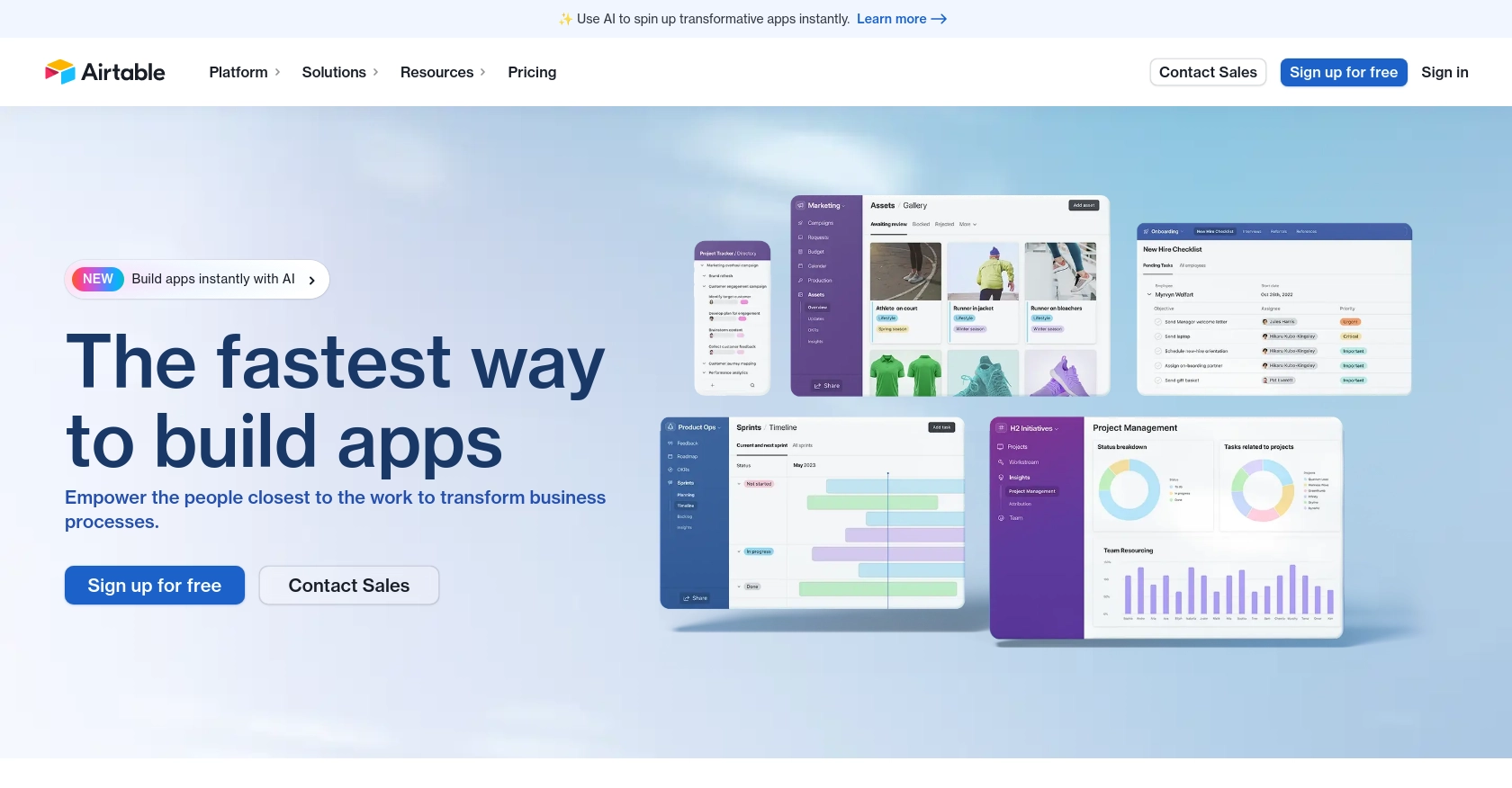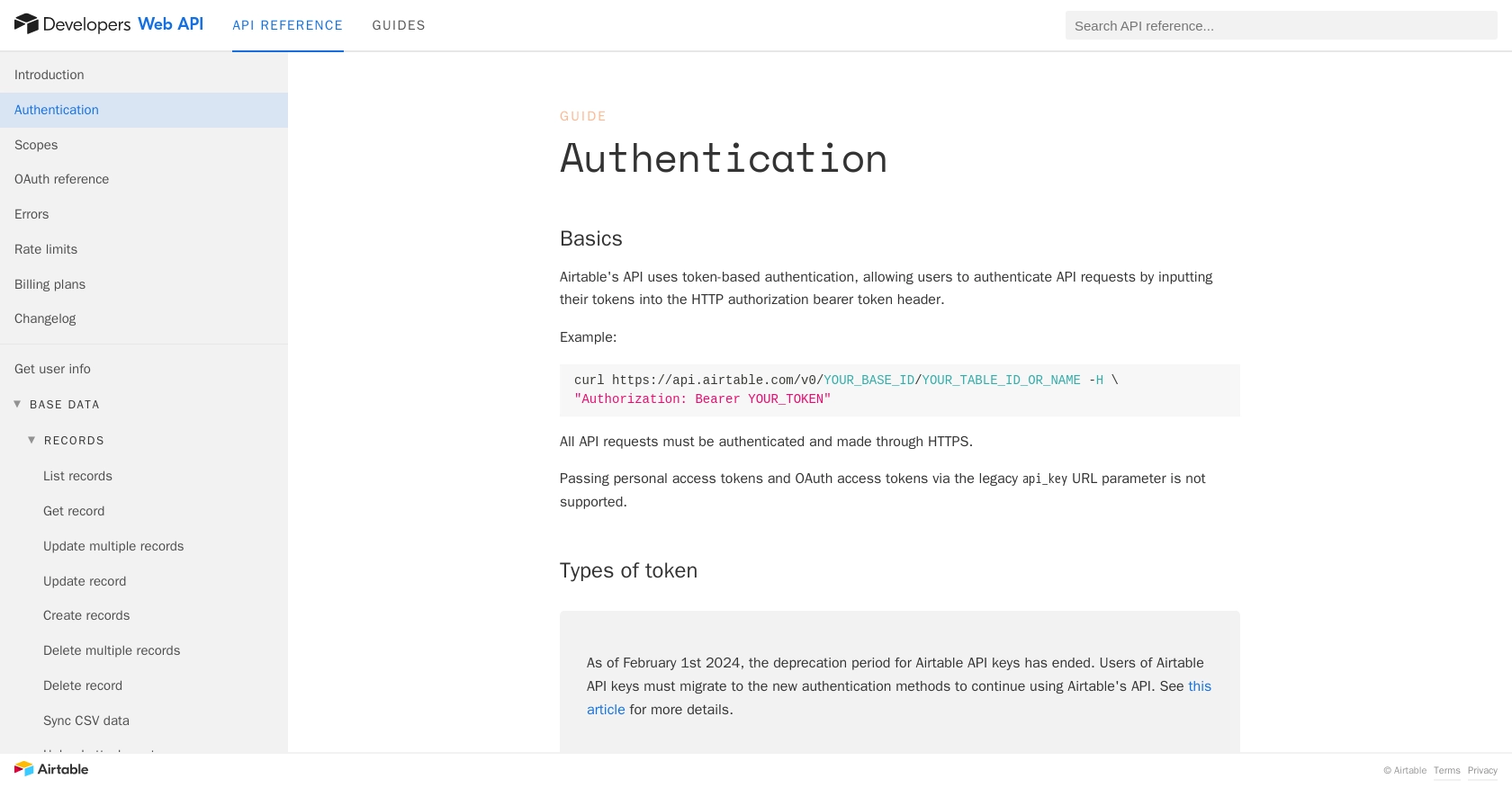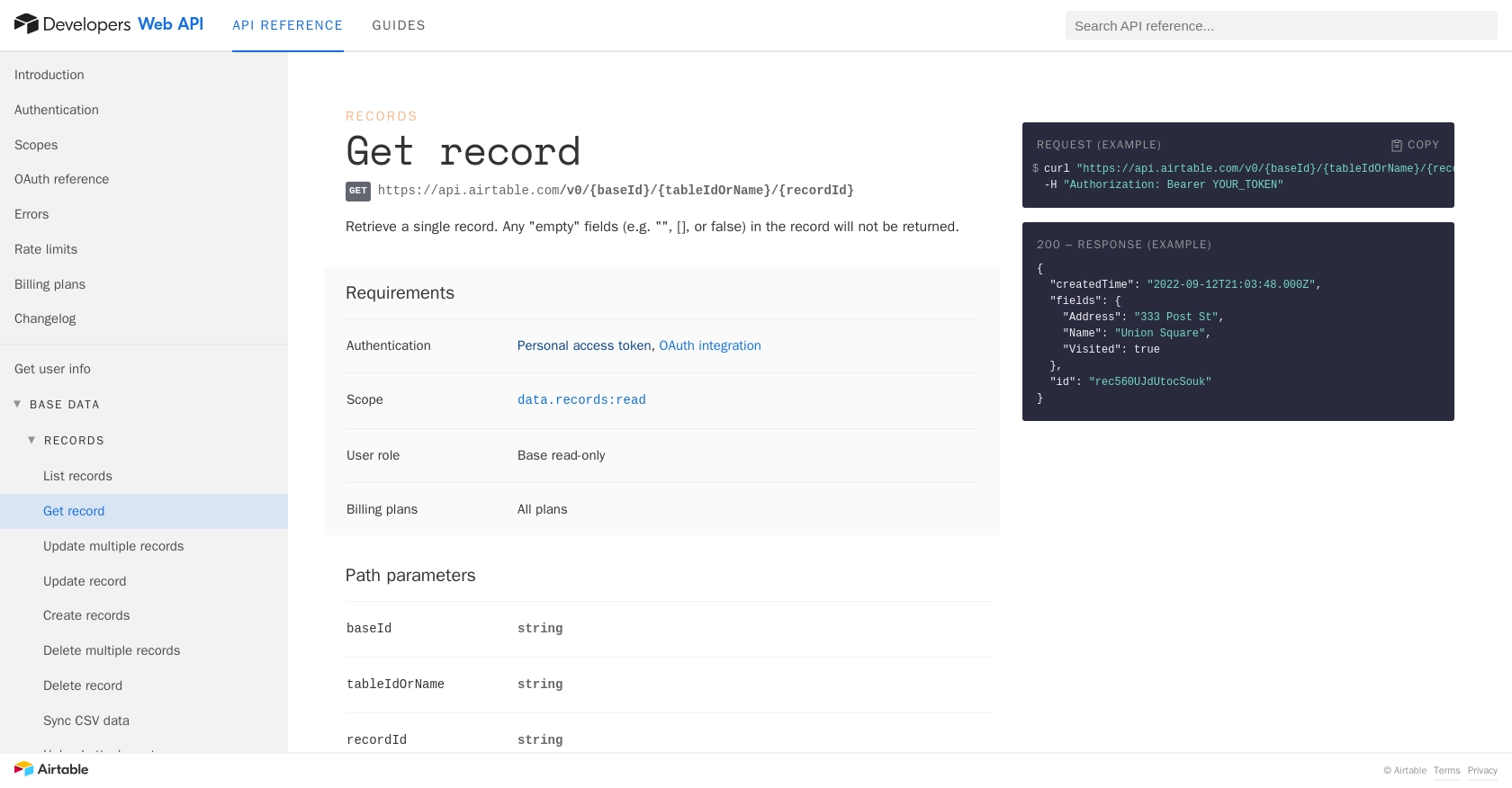Using the Airtable API to Get Records (with Python examples)

Introduction to Airtable API Integration
Airtable is a versatile cloud-based platform that combines the simplicity of a spreadsheet with the power of a database. It allows users to organize and manage data in a highly customizable way, making it a popular choice for teams across various industries.
Developers may want to integrate with Airtable's API to automate data management tasks, such as retrieving records for analysis or reporting. For example, a developer could use the Airtable API to fetch records from a project management base and generate real-time reports, enhancing productivity and decision-making processes.
Setting Up Your Airtable Test or Sandbox Account
Before you can start interacting with the Airtable API, you need to set up a test or sandbox account. This will allow you to safely experiment with API calls without affecting live data. Airtable offers a free tier that is perfect for development and testing purposes.
Creating an Airtable Account
If you don't already have an Airtable account, follow these steps to create one:
- Visit the Airtable signup page.
- Fill in the required information, such as your email address and password, or sign up using a Google account.
- Follow the on-screen instructions to complete the account setup.
Setting Up a Base for Testing
Once your account is ready, you need to create a base where you can test your API interactions:
- Log in to your Airtable account.
- Click on "Add a base" and choose "Start from scratch" to create a new base.
- Name your base and add any tables or fields you wish to use for testing.
Generating an OAuth Token for Airtable API Access
Since Airtable uses OAuth for authentication, you'll need to create an app to obtain the necessary credentials:
- Navigate to the Airtable OAuth creation page.
- Register your application by providing the required details, such as the app name and redirect URI.
- Choose the necessary scopes for your application, such as
data.records:readfor reading records. - Once registered, follow the OAuth flow to obtain your access token.
Ensure you store your client ID, client secret, and access token securely, as they are required for API authentication.
For more detailed information on authentication, refer to the Airtable authentication documentation.

sbb-itb-96038d7
Making API Calls to Retrieve Airtable Records Using Python
To interact with the Airtable API and retrieve records, you'll need to use Python, a versatile and widely-used programming language. In this section, we'll guide you through the process of setting up your environment, writing the necessary code, and handling potential errors.
Setting Up Your Python Environment for Airtable API Integration
Before you start coding, ensure you have Python installed on your machine. We recommend using Python 3.11.1 or later. Additionally, you'll need the requests library to make HTTP requests.
- Install Python from the official website if you haven't already.
- Open your terminal or command prompt and install the
requestslibrary using pip:
pip install requests
Writing Python Code to Fetch Records from Airtable
Now that your environment is ready, let's write the Python code to fetch records from your Airtable base. Create a file named get_airtable_records.py and add the following code:
import requests
# Set the API endpoint and headers
base_id = "YOUR_BASE_ID"
table_name = "YOUR_TABLE_NAME"
endpoint = f"https://api.airtable.com/v0/{base_id}/{table_name}"
headers = {"Authorization": "Bearer YOUR_ACCESS_TOKEN"}
# Make a GET request to the API
response = requests.get(endpoint, headers=headers)
# Check if the request was successful
if response.status_code == 200:
data = response.json()
for record in data.get("records", []):
print(record)
else:
print(f"Failed to retrieve records: {response.status_code} - {response.text}")
Replace YOUR_BASE_ID, YOUR_TABLE_NAME, and YOUR_ACCESS_TOKEN with your actual Airtable base ID, table name, and access token.
Running the Python Script to Retrieve Airtable Records
Execute the script from your terminal or command prompt using the following command:
python get_airtable_records.py
If successful, you should see the records from your specified Airtable table printed in the console.
Handling Errors and Verifying API Call Success
It's crucial to handle potential errors when making API calls. Airtable's API returns various HTTP status codes to indicate success or failure:
- 200 OK: The request was successful.
- 401 Unauthorized: Invalid or missing authentication credentials.
- 403 Forbidden: Insufficient permissions to access the resource.
- 404 Not Found: The specified resource could not be found.
- 429 Too Many Requests: Rate limit exceeded. Wait 30 seconds before retrying.
For more details on error codes, refer to the Airtable error documentation.
Verifying Retrieved Data in Airtable
After running your script, you can verify the retrieved data by checking your Airtable base. Ensure the records match the output in your console.
For further information on making API calls, visit the Airtable API documentation.

Conclusion and Best Practices for Using Airtable API with Python
Integrating with the Airtable API using Python can significantly enhance your data management capabilities, allowing for seamless automation and real-time data retrieval. By following the steps outlined in this guide, you can efficiently set up your environment, authenticate using OAuth, and interact with Airtable's API to fetch records.
Best Practices for Secure and Efficient Airtable API Integration
- Secure Storage of Credentials: Always store your client ID, client secret, and access tokens securely. Consider using environment variables or a secure vault to manage sensitive information.
- Handle Rate Limits Gracefully: Airtable's API enforces a rate limit of 5 requests per second per base. Implement back-off and retry logic to handle 429 status codes effectively. For more details, refer to the Airtable rate limits documentation.
- Data Transformation and Standardization: Ensure that the data retrieved from Airtable is transformed and standardized as needed for your application. This will help maintain consistency and improve data usability.
Enhance Your Integration Strategy with Endgrate
While integrating with Airtable's API can be straightforward, managing multiple integrations across different platforms can become complex and time-consuming. Endgrate offers a unified API solution that simplifies this process, allowing you to focus on your core product development. By using Endgrate, you can build once for each use case and leverage an intuitive integration experience for your customers.
Explore how Endgrate can streamline your integration efforts by visiting Endgrate's website and discover how companies like yours are saving time and resources.
Read More
- https://endgrate.com/provider/airtable
- https://airtable.com/developers/web/api/authentication
- https://airtable.com/developers/web/api/scopes
- https://airtable.com/developers/web/api/oauth-reference
- https://airtable.com/developers/web/api/errors
- https://airtable.com/developers/web/api/rate-limits
- https://airtable.com/developers/web/api/get-record
Ready to get started?
